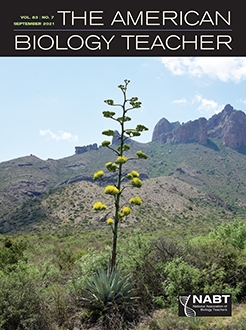We use the population decline of the monarch butterfly as a central phenomenon to support data analysis and scientific argumentation skills and to motivate inquiry and content learning in intermediate college-level biology courses. Students practice analyzing population trends, critically evaluate scientific articles that debate the causes and implications of those trends, and interpret data using key biological concepts in evolution and ecology. Students learn how to evaluate and reconcile conflicting information and use evidence and scientific reasoning to develop arguments about how communities should respond to the decline. Many of our students find the phenomenon engaging, probably because many of them come from the Upper Midwest and have witnessed or even reared monarch butterflies at home or in previous schooling. However, we draw upon ideas from culturally relevant science teaching to engage more of our students in critical analysis about the relevance of these topics to their communities, and we propose strategies for teaching about the monarch decline phenomenon in diverse contexts.
How to translate text using browser tools
10 September 2021
Making Sense of Monarchs: Toward Linking Phenomena & Scientific Argumentation with Cultural Relevance
Emily K. Mohl,
Bethany M. Tritz,
Ella B. Doud,
Emilia G. Galchutt,
Michele J. Koomen
ACCESS THE FULL ARTICLE
It is not available for individual sale.
This article is only available to subscribers.
It is not available for individual sale.
It is not available for individual sale.

The American Biology Teacher
Vol. 83 • No. 7
September 2021
Vol. 83 • No. 7
September 2021
culturally relevant science teaching
Inquiry
Monarch butterfly
phenomena
scientific argumentation




